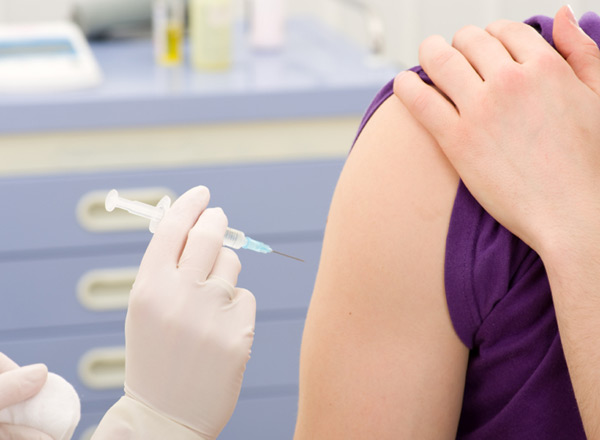Understanding the general idea behind how vaccines work is important for everyone to know. Though the process is very complicated, I want to explain some important concepts that I hope will help you appreciate the science and necessity of vaccines.
Vaccines work by mimicking the diseases against which they are designed to protect, without actually causing the symptoms of the disease. When the body detects a foreign invader (e.g., virus, bacteria), it recruits an army of defense mechanisms designed to combat the threat. The first time you are exposed to a particular threat, however, your body will usually exhibit symptoms of the disease while it takes the time to assemble that army. A vaccine consists of a small part of the virus or bacteria that stimulates this immune response without actually being able to cause the disease. With this sort of “practice run” under its belt, if and when the body is exposed to the real disease in the future, it already has its army in place and ready for battle.
Everybody has essentially the same defense system, but it may work in different ways for different people. For some, that army will assemble rapidly and leap into action at the first exposure, leading to quick, effective protection against disease. Others may not assemble their armies as quickly or as effectively, leading to sub-par immune protection. When we give a vaccine, we typically don’t know how effectively the body will respond, but for most healthy people, there is a good chance that the response will be sufficient to provide protection.
Because we usually don’t know who will fully respond and who won’t, we rely on those around us to be fully vaccinated for protection. This concept is commonly known as “herd immunity.” The vaccinated members of the “herd” who have responded well to the vaccine are not sickened by and do not transmit the disease, thereby protecting the other members of that “herd” who may not be fully protected. This may also be referred to as “community immunity.” Whatever you call it, vaccines rely on all of us working together to provide maximum protection.
Herd immunity is especially important for people who are unable to get vaccinated due to certain conditions (e.g., young babies, people with weakened immune systems). If that unvaccinated person is surrounded by people who have been vaccinated, the protection that confers is almost as good as that person being vaccinated himself. This special type of herd immunity is often referred to as “cocooning,” since you are protecting them from the disease by surrounding them with a “cocoon” of vaccinated people.
Pretty impressive, right? Vaccines are one of the greatest advances in global public health over the last couple centuries. But this protection won’t continue if people do not get vaccinated because they are worried about the safety of vaccines. We will visit this topic next in our blog series on vaccines.
Resources:
http://www.cdc.gov/vaccines/pubs/parents-guide/downloads/parents-guide-part3.pdf
http://www.immunizeca.org/wp-content/uploads/2010/12/IMM-1056_web.pdf
http://www.fda.gov/BiologicsBloodVaccines/Vaccines/QuestionsaboutVaccines/UCM070430



